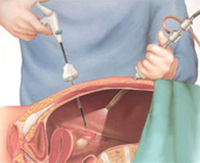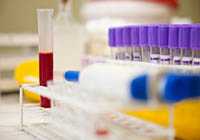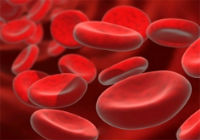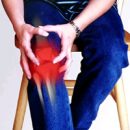Diagnostic laparoscopy is an operational research method that the doctor applies to form an accurate diagnosis. The main indications of diagnostic laparoscopy are pain in the abdomen and the presence of tumor education.
Content
There are situations where, despite all efforts, the doctor has difficulty in setting an accurate diagnosis in violations associated with diseases of the abdominal organs and a small pelvis. Then doctors and resort to the help of endoscopic surgery, assigning diagnostic laparoscopy.
The concept of diagnostic laparoscopy
Diagnostic laparoscopy is an operational research technique in which the doctor examines the abdominal organs and a small pelvis, without making large cuts on the abdominal wall. Only a few (more often two) small cuts are made. To increase the size of the field of view, a small amount of gas is injected. After one section, the device is inserted under the name Laparoscope, which pursues a thin tube with the lens at one end and the eyepiece on the other (or the other end is connected to the camcorder block through which the image is transmitted to the monitor or TV screen). A manipulator is inserted through another incision, with the help of it, the doctor shifts internal organs. After a detailed inspection and study, an accurate diagnosis is made.
Indications for the appointment of diagnostic laparoscopy
The most common conditions requiring the appointment of diagnostic laparoscopy:
- abdominal pain
- Tumor Education
- Ascites (cluster of pathological fluid)
- Liver diseases
Abdominal pain can be acute and chronic. Diagnostic laparoscopy is used to determine the reason and of the other type of pain. Most often, its reasons are appendicitis, spikes, infections of small pelvis organs, endometriosis, bleeding and other diseases.
Patient himself can detect the tumor formation of the abdominal cavity, and the doctor during inspection. In diagnostic laparoscopy, the doctor carefully examines education and take a piece of fabric for further research and accurate diagnosis.
Ascites is a condition in which there is a liquid in the abdominal cavity. Diagnostic laparoscopy is an effective method for identifying the root causes of this fluid.
If other research methods revealed a change in the surface of the liver, then the diagnostic laparoscopy is one of the safest and accurate methods for taking a piece of hepatic fabric for the subsequent study and refinement of the diagnosis.
Complications of diagnostic laparoscopy
Complications are rare, among them there are bleeding as a result of the injury of vessels of the abdominal wall and the abdominal organs (during diagnostic laparoscopy, as with any other operation there is always a risk of damage to internal organs), organ perforations, and infection.
Preparation of the patient for diagnostic laparoscopy
 For preparation for diagnostic laparoscopy is not required. Depending on the age, gender and health care, the doctor appoints a research complex, including a binding blood test, ECG, X-ray studies, ultrasound and T.D. Before the procedure, it is necessary to refrain from meals for 8 hours. The patient is obliged to inform the doctor about what drugs he accepts, since the reception of some medicines is recommended to stop a few days before diagnostic laparoscopy (such a position refers to such drugs as aspirin, ibuprofen, etc.)
For preparation for diagnostic laparoscopy is not required. Depending on the age, gender and health care, the doctor appoints a research complex, including a binding blood test, ECG, X-ray studies, ultrasound and T.D. Before the procedure, it is necessary to refrain from meals for 8 hours. The patient is obliged to inform the doctor about what drugs he accepts, since the reception of some medicines is recommended to stop a few days before diagnostic laparoscopy (such a position refers to such drugs as aspirin, ibuprofen, etc.)
Diagnostic laparoscopy is performed under anesthesia or local anesthesia, the question of the anesthesia method is solved individually by the doctor.
Compared to the usual operation, diagnostic laparoscopy is less traumatic (muscles and others are less damaged. fabrics). For this reason, fewer restrictions are superimposed on the physical activity of the patient than compared to the operation. Walking is allowed and even encouraged, after a few hours after the completion of diagnostic laparoscopy. Start best with small walks, gradually increasing distance and duration. No need to adhere to a strict diet. Anesthetic drugs must be taken in accordance with the directions of the doctor.









